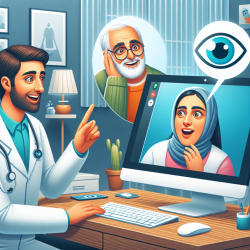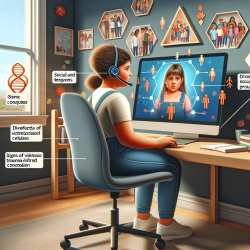Introduction
The world of genetic and neurometabolic disorders is complex, yet profoundly impactful, particularly when it comes to pediatric care. One such disorder, L-2-hydroxyglutaric aciduria (L-2-HGA), is a rare condition with significant implications for speech and language development. The recent study titled "Clinical, neuroimaging, and genetic features of L-2-hydroxyglutaric aciduria in Arab kindreds" provides valuable insights that can enhance clinical practice and improve outcomes for affected children.
Understanding L-2-Hydroxyglutaric Aciduria
L-2-HGA is a neurometabolic disorder characterized by elevated levels of L-2-hydroxyglutaric acid in body fluids. It is an autosomal recessive condition, meaning both parents must carry the mutated gene for a child to be affected. The disorder manifests early, often during infancy or childhood, with symptoms including psychomotor regression, speech delays, and various neurological issues.
Key Findings from the Study
The study conducted on Arab families revealed several critical findings:
- Identification of specific mutations in the L2HGDH gene, which are pivotal for diagnosis.
- Common clinical features include developmental delays, speech defects, and ataxia.
- Increased risk of brain tumors in some patients, highlighting the need for vigilant monitoring.
These findings underscore the importance of genetic testing and early intervention in managing L-2-HGA.
Implications for Practitioners
For speech-language pathologists and other practitioners, these insights offer a roadmap for improving patient care:
- Early Diagnosis: Genetic testing should be considered for early diagnosis, especially in families with a history of L-2-HGA.
- Customized Therapy Plans: Understanding the specific genetic mutations can help tailor therapy plans to address individual needs, particularly in speech and language development.
- Interdisciplinary Approach: Collaborating with geneticists, neurologists, and other specialists can provide a comprehensive care plan for affected children.
Encouraging Further Research
While this study provides a foundation, there is a need for further research to explore the variability of clinical presentations and the development of targeted interventions. Practitioners are encouraged to contribute to and stay updated with ongoing research to continually refine their practice.
Conclusion
By integrating the findings from this study into clinical practice, practitioners can significantly enhance the care and outcomes for children with L-2-HGA. The journey towards better understanding and managing this disorder is ongoing, and each step forward brings us closer to optimal care for affected children.
To read the original research paper, please follow this link: Clinical, neuroimaging, and genetic features of L-2-hydroxyglutaric aciduria in Arab kindreds.










